Co-authored by Melanie Kloetzel and Phil Smith
Writing
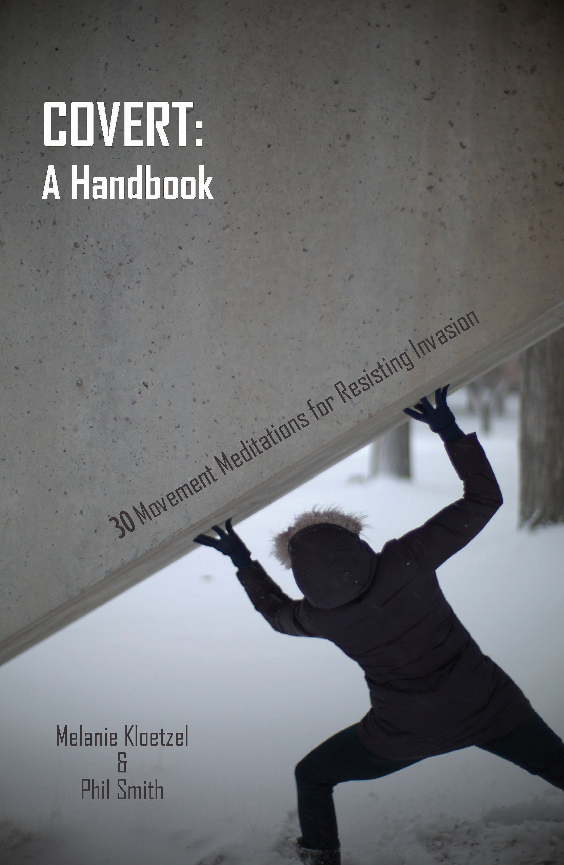
Book
COVERT: A Handbook - 30 Movement Meditations for Resisting Invasion
Published by Triarchy Press
January 2021
ISBN 978-1-913743-15-4
Abstract
Do you ever feel you live in a world where other people see your online presence as being more important than your physical one? Do you ever have the sense that your deepest fears, loves or aspirations… even your dreams… are not safe from online algorithms and advertising?
Instead of delivering up your psyche wholesale to online retailers and information moguls, Covert: A Handbook suggests a way to resist this invasion. Using 30 carefully crafted ‘movement meditations’ – each with an accompanying photo to explain it – Covert outlines a straightforward, embodied practice that we can use to defend and preserve ourselves in the everyday world.
The Covert practice is a way to diminish the lure of the screens, sidestep invasive scrutiny, and nurture the dialogue between our conscious and unconscious selves. By prioritizing introspective interactions with the quirky and complex world around us, Covert shows that we have the means to cultivate our interior and imaginative selves through a dynamic, physical engagement with the wider world.
Book
(Re)Positioning Site Dance: Local Acts, Global Perspectives
Co-authored by Melanie Kloetzel, Victoria Hunter, Karen Barbour
Published by Intellect Books
July 2019
ISBN 9781783209989
Abstract
Site-based dance performance and sited movement explorations implicate dance makers, performers and audience members in a number of dialogical processes between body, site and environment. This book aims to articulate international approaches to the making, performing and theorising of site-based dance. Drawing on perspectives from three practitioner-academics based in three distinct world regions – Europe, North America, and Oceania – the authors explore a range of practices that engage with socio-cultural, political, ecological, and economic discourses, and demonstrate how these discourses both frame and inform processes of site dance making as well as shape the ways in which such interventions are conceived and evaluated. Intended for artists, scholars and students, (Re)Positioning Site Dance is an important addition to the theoretical discourse on place and performance in an era of global socio-political and ecological transformation.
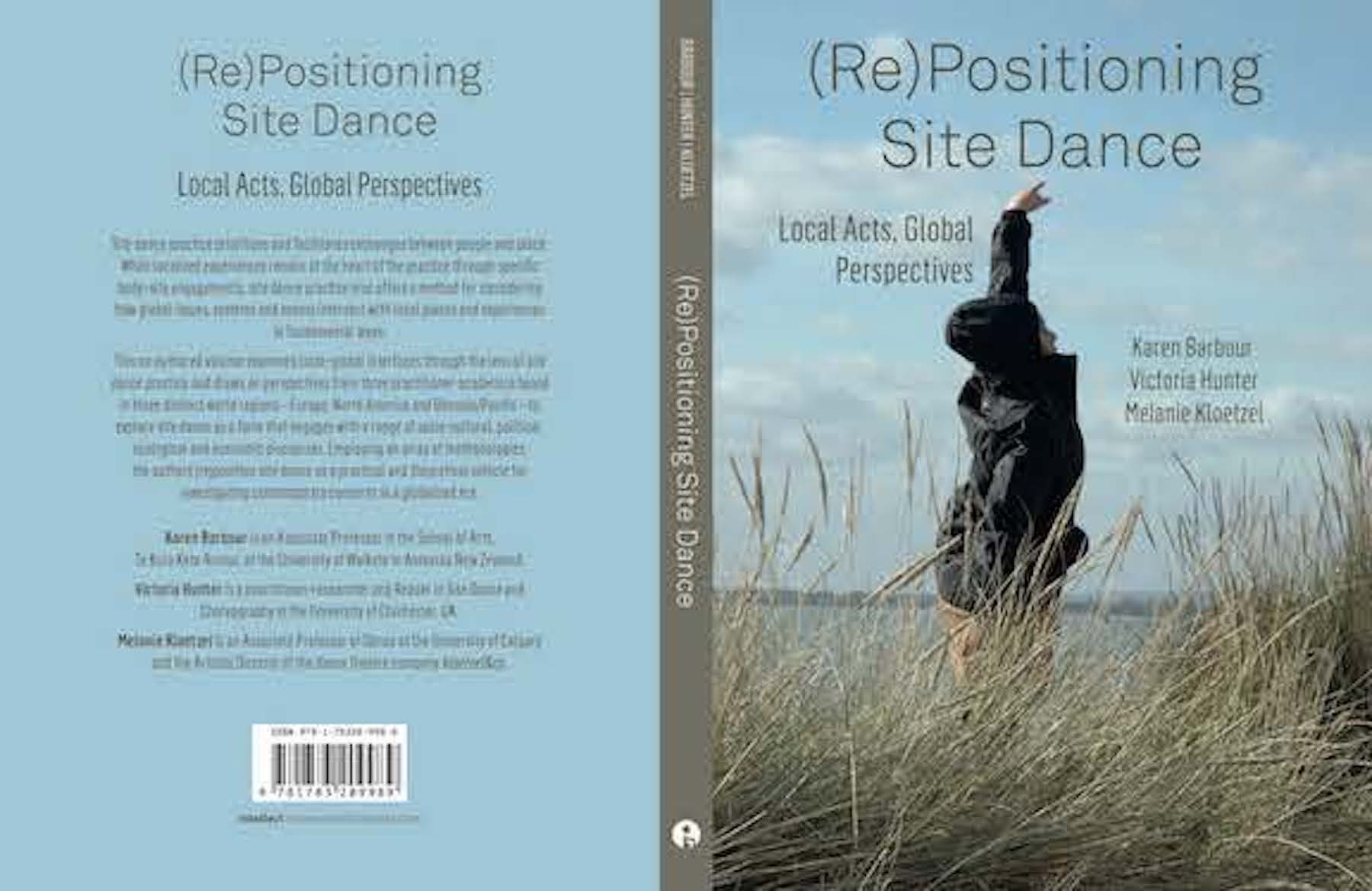
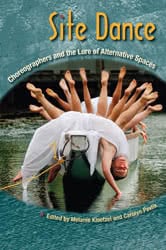
Book
Site Dance: Choreographers and the Lure of Alternative Spaces
Edited by Melanie Kloetzel and Carolyn Pavlik, University Press of Florida, 2009
Available in hard cover, paperback, and eBook
Abstract
In recent years, site-specific dance has grown in popularity. In the wake of groundbreaking work by choreographers who left traditional performance spaces for other venues, more and more performances are cropping up on skyscrapers, in alleyways, on trains, on the decks of aircraft carriers, and in a myriad of other unexpected locations worldwide. In Site Dance: Choreographers and the Lure of Alternative Spaces, the first anthology to examine site-specific dance, editors Melanie Kloetzel and Carolyn Pavlik explore the work that choreographers create for non-traditional performance spaces and the thinking behind their creative choices. Combining interviews with and essays by some of the most prominent and influential practitioners of site dance, they look at the difficulties and rewards of embracing alternative spaces. The close examinations of the work of artists like Meredith Monk, Joanna Haigood, Stephan Koplowitz, Heidi Duckler, Ann Carlson, and Eiko Otake provide important insights into why choreographers leave the theatre to embrace the challenges of unconventional venues. Site Dance also includes more than 80 photographs of site-specific performances, revealing how the arts, and movement in particular, can become part of and speak to our everyday lives. Celebrating the often unexpected beauty and juxtapositions created by site dance, the book is essential reading for anyone curious about the way that these choreographers are changing our experience of the world one step at a time.
“Kloetzel and Pavlik have created a valuable resource, documenting a wide range of site-specific dance events through a combination of interviews, practitioners’ accounts, and stunning images. This volume raises useful questions about the politics of art’s interventions into the public realm and gives insight into the pragmatic challenges of making site dance.”
Fiona Wilkie, Roehampton University
Journal: Special Issue
Dancing Urbanisms – Choreographic Practices
Co-edited by Melanie Kloetzel, Victoria Hunter, Karen Barbour
Published by Intellect Books
Volume 10, No. 1
Abstract
Collectively, the contributions in ‘Dancing Urbanisms’ explore and question how site-based choreographic practices in urban locations extend understandings of embodied experiences in and relationships to site and place. This rich palette of perspectives provokes new considerations of ‘dancing urbanisms’ as a critical practice of the twenty-first century. The special issue includes Kloetzel’s article ‘Site dance as activist methodology: Creating performance/protest in sites of assembly’. This article examines the impact of how site dance in urban landscapes fosters discourse addressing large-scale geo- and socio-political issues in public and civic spaces. The article specifically explores how a certain site-adaptive project, Rooms (2015–16), works to further public discourse around such issues through the careful honing of methodological process. To realize the aims of advancing political discourse, the article argues that site dance methodologies must work to: empower participants through constructive mechanisms/processes; foster inclusion of diverse publics in both creation and presentation stages of a work; and locate such projects in accessible public civic spaces historically associated with assembly. By endeavouring to methodologically craft site dance practice for spaces that are intended for public assembly and discourse, we may realize the goal of creating a diverse, empowered and engaged public that will address the critical systemic concerns of our time, including neo-liberalism, globalization and climate change.
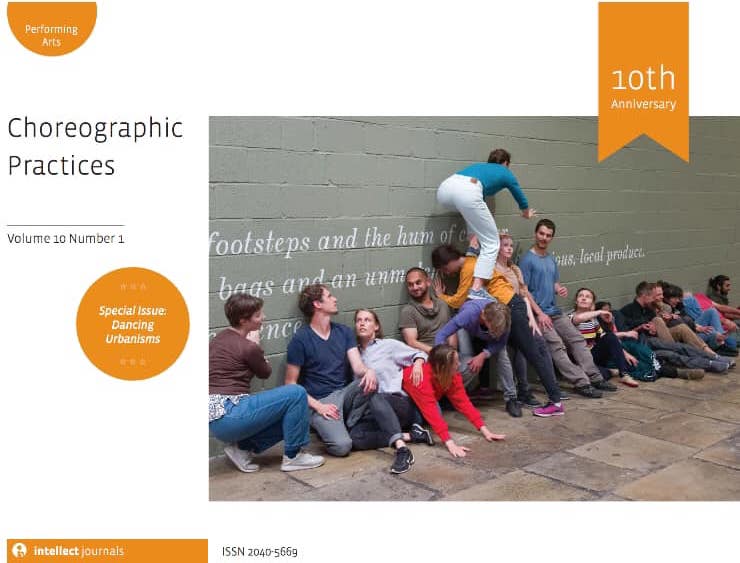
Articles and Book Chapters
Site Performance, Coloniality and the Climate Crisis
The Routledge Companion to Site-Specific Performance
2025
ISBN:
9781032254104
Abstract
The climate and ecological emergencies place new – and often urgent – demands on place-based praxis and practitioners. This sense of urgency has led me to reconsider the frameworks for site performance, particularly its assumptions, elisions, and exclusions. Arguing that it is (past) time for the site performance field to grapple with its own roots in the hegemonic ideologies of modernity/coloniality, I offer a pointed question: Here, at the ‘end of the world’, is it possible to create an ethically-informed and non-extractive place-based performance praxis? To answer this query, I dig into the complications of decolonization, particularly for a field that has often overlooked the many land-based artistic practices that exist around the world. Noting the dangers of casual inclusion of such practices into the scholarly tomes of settler colonial and imperial scholars (typically based in the Global North), I underscore the need to develop long-term, meaningful relationships with land-based communities as well as to honestly admit our complicities in and contributions to the extractive systems of modernity/coloniality. Finally, by examining particular place-based projects, including High Water Line (2007-present), 36.5 (2013-22), House/Full of Blackwomen (2015-23), and Umuarama (2021), I ponder anew the ‘attending to place’ basis of the field, noting that a consideration of need is critical as the climate crisis intensifies, impacting (inequitably but also collectively) all living beings on the planet. In the end, I contend that it is time for place-based practitioners to address more concertedly the impacts of coloniality as we stand up for place and planet.
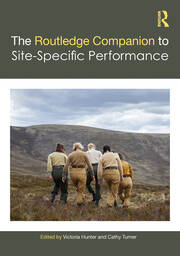

Articles and Book Chapters
Decolonizing Site-Specific Performance Methodologies: Preliminary steps
Abstract
As viral contagions, pandemic lockdowns and technological innovations transform daily routines, the relationship between art and public space changes as well. Through a long-term investigative and practice-based process that pairs the analytical frames of landscape architecture and site dance praxis, I reconsider what it might mean to create place-based performance in urban public spaces today. Beginning with a deconstruction of the earliest anthology addressing site dance, Site Dance: Choreographers and the Lure of Alternative Spaces, the article joins findings from recent site-specific performance theory with queer and postcolonial phenomenology to re-examine site-specific performance’s ethical premise of ‘attending to place’ in a decolonizing context. Highly cognizant of the limitations and dangers of my own aspiration to decolonize the field, particularly from my perspective as a White settler, I chart some preliminary steps through a revised methodological praxis, critical experiential archaeology. Yet, while this praxis’ two-pronged approach – involving both discursive research (with critical considerations of background and positionality) and phenomenological research (via a process called decolonial flânerie) – may be helpful as a scaffolding for decolonizing place-based practices, I caution that such a scaffolding is inherently inadequate without a more profound diversification of the site performance field.
Articles and Book Chapters
Ecological Performance and 'Settler Creep': Making Space to Resist Invasion
Performance Research
2023
Abstract
The penetration of climate change into our individual and collective consciousness(es) has been a slow process. Using Una Chaudhuri’s (1994) initial demand for a new era of ecological theatre (‘“There must be a lot of fish in that lake”: Toward an ecological theater’, Theater 25(1): 23–31) and Carl Lavery’s (2018) follow-up volume that asked ‘what can theatre do ecologically’ as a springboard (Performance and Ecology: What can theatre do? Abingdon and New York, NY: Routledge), Melanie Kloetzel’s contribution to this issue, ‘Ecological Performance and “Settler Creep”: Making space to resist invasion’ explores the intersection of performance research and the ecological and climate crises. Borrowing from Heather Davis-Fisch’s (2017) coining of ‘settler creep’ (in Laura Levin and Marlis Schweitzer (eds) Performance Studies in Canada, Montreal and Kingston: McGill-Queen’s University Press, pp. 67–89), Kloetzel argues that attempts to create an ‘ecological performance’ have floundered due to the inability to effectually address the modernity/coloniality narrative that undergirds the increasing devastation of the planet. Kloetzel starts by examining the hegemonic grip of this narrative with the support of Indigenous scholar Vanessa Andreotti (2021), after which she charts two speculative pathways through the theoretical stew of contemporary performance research (‘The task of education as we confront the potential for social and ecological collapse’, Ethics and Education 16(2): 143–58 and ‘Depth education and the possibility of GCE otherwise’, Globalisation, Societies and Education 19(4): 496–509). This charting reveals the slippery invasion of ‘settler creep’ into our efforts, hampering our ability both to reckon with and uproot modernity/coloniality’s ecocidal narratives and to find decolonial and ecologically-grounded counterhegemonic narratives. Yet, by examining tactics forwarded by geographers Sarah de Leeuw and Sarah Hunt (2018 ‘Unsettling decolonizing geographies’, Geography Compass 12(7): 1–14), as well as by touching on the embodied practices developed by Kloetzel and Phil Smith (2021 Covert: A handbook: 30 movement meditations for resisting invasion, Bridport: Triarchy Press), the artist digital residency program created by Vancouver-based Gesturing Toward Decolonial Futures collective, and TRAction’s turbulent journey to create the Climate Art Web, Kloetzel shows how efforts to make space for confronting modernity/coloniality’s hegemonic effects may offer a generative method to resist the creep.
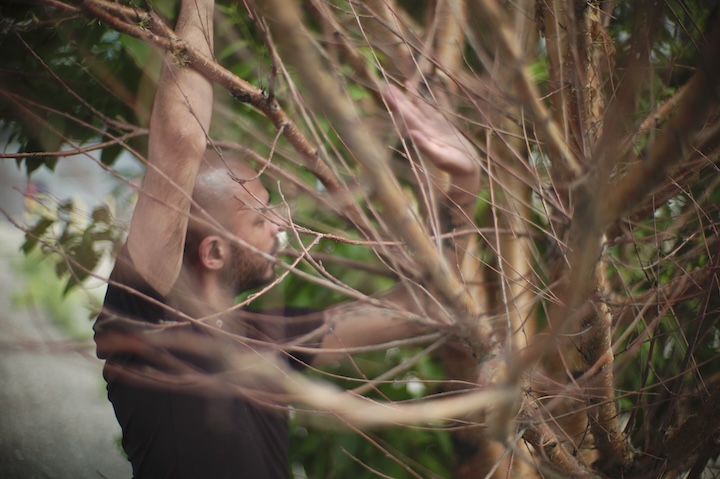
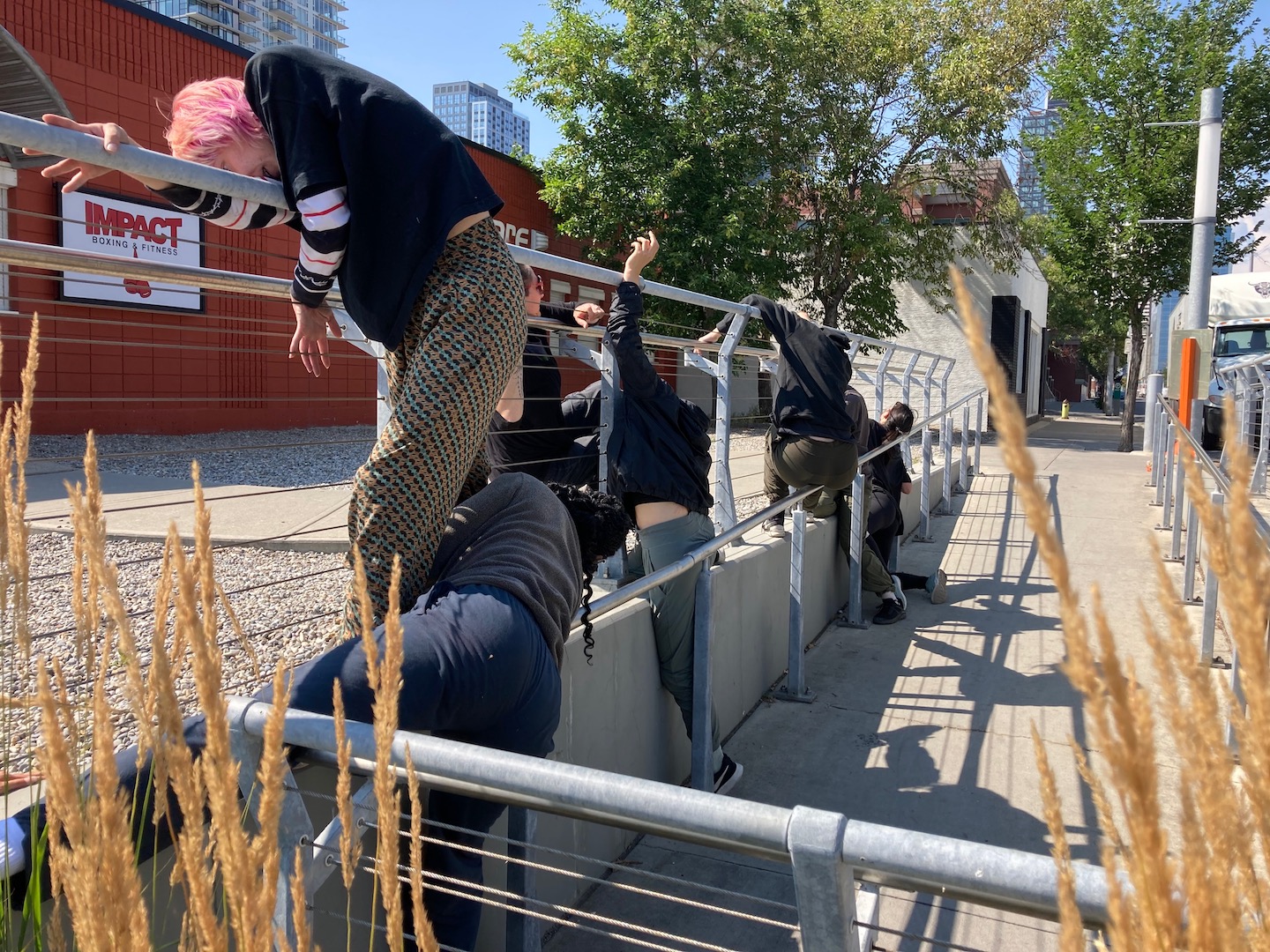
Articles and Book Chapters
New Directions in Site Performance Practice: Acknowledging Climate Coloniality in Practice-Based Research
Performance Matters
July 2023
Abstract
In this short piece, I start to tease out the challenges of examining a field of performance that, in theory, deeply understands place but has insufficiently faced the impacts of climate coloniality on place, in part due to the fact that the field has largely been defined and developed by white researchers in the Global North. Specifically, by looking at a recent project called VINES, initiated by me and Brandy Leary, I dig into the site performance field’s investment in workshop-oriented practice-based research to consider what it might mean to intersect posthumanist research methodologies with Indigenous methodologies that emphasize relationality, reciprocity, and accountability.
https://performancematters-thejournal.com/index.php/pm/article/view/459
Articles and Book Chapters
Dance Education, Decolonization, and the Climate Crisis: Developing Ethical Pedagogies
Journal of Dance Education
2023
Abstract
To date, there has been minimal analysis of the intersections between dance pedagogy and the climate crisis. Arguing that it is essential to approach the climate crisis via the lens of decolonization and underscoring the indivisible links between modernity, coloniality and the climate emergency, the author considers what it might mean to develop an ethical dance pedagogy for a student population facing the grim consequences of climate change. After highlighting the academy’s decolonizing failures, the author applies principles from Indigenous scholars Vanessa Andreotti, Sarah Hunt, and others to offer a pedagogical case study of her own deep dive into her position on stolen land. Arguing that it is critical to model such digging to demonstrate our collective complicity in the hegemonic systems of modernity/coloniality, the author concludes by bringing together emerging methods developing both inside and outside of dance education to propose a scaffolding for an ethical dance pedagogy for the twenty-first century.
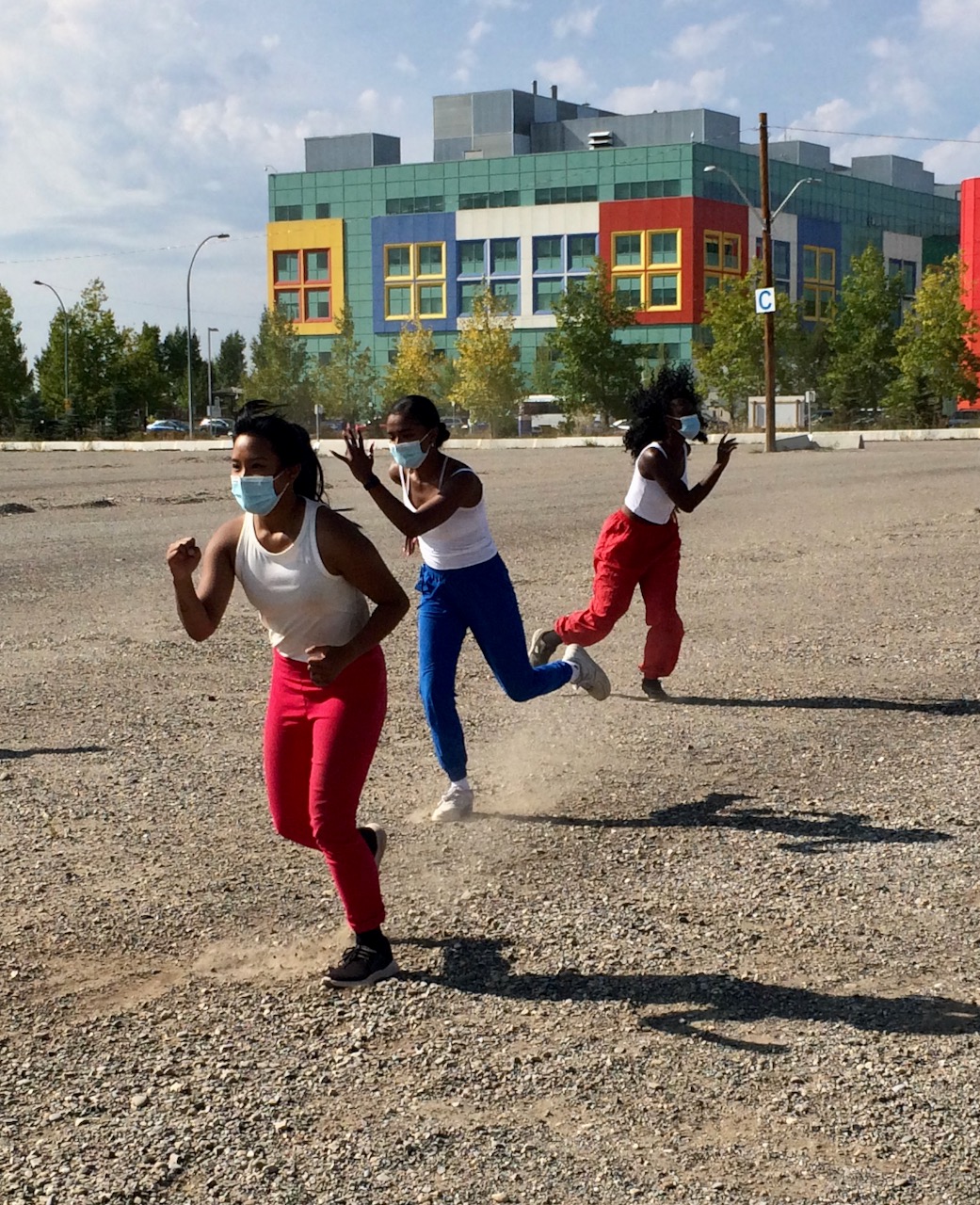
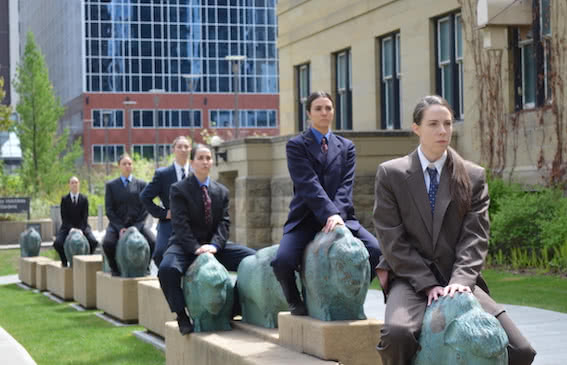
Articles and Book Chapters
Playing Politics: Versatile Operations in Site-Adaptive Performance
Interventions – Contemporary Theatre Review
December 2019
Abstract
In ‘Playing Politics’, I offer a creative essay examining the development of the site-adaptive performance work, It began with watching (now retitled MEN in charge). Riffing on the current political situation in which democracy is under threat due to the rising power of corporate capitalism and surveillance technologies, It began with watching focuses on how such power manifests in the bodyminds of political actors. In this article, I offer an analysis of how versatility as an operation in performance can question or perhaps even capsize the neoliberal agendas that outwardly embrace versatility as a watchword. In particular, I examine the effects of distilled scoring as a site-versatile creative approach, and demonstrate its potential for complexity, disruption of authorship, and stealthy incursions into public space. As such, I argue that the site-versatile approach may not only support the efficiency mandate of the festival circuit, but rather that it holds the possibility both to check the unfailing surveillance and panoptic power of the present and to regain public space as a place of deliberation, assembly, and protest.
Articles and Book Chapters
Performing Versatility in a Neoliberal Age: Site-Adaptive Performance
Contemporary Theatre Review
Volume 29, Issue 3
pp. 256-74
DOI: 10.1080/10486801.2019.1615900
Abstract
Over the past thirty years, we have witnessed an explosion of urban arts festivals around the globe, as well as the development and expansion of a neoliberal order that is intent on promoting municipalities as lucrative nodes in a tourist network. One performance form that has flourished under such an arrangement is site-adaptive dance, a type of serialized performance where choreographic work is purposefully created for presentation at multiple, geographically-discrete, non-theatre sites. This article investigates how the drive to serialize is impacting the evolving creation methods in the site-adaptive dance genre. Focusing on a particular creation methodology within the genre, namely the site-versatile approach, the article employs the critical insights of Laura Levin, Fiona Wilkie, and Jen Harvie to explore two works that employ such an approach, Willi Dorner’s Bodies in Urban Spaces and Brandy Leary’s Glaciology. Through these works, I consider how the embedded issues of mobility, adaptation, and labour not only serve to define the increasingly popular genre, but also to influence its trajectory, particularly in relation to the neoliberal state. As such, I will demonstrate how the methodologies of site-based performance can problematize, but also profit from, neoliberal agendas in an age of tourism, migration, and precarity.
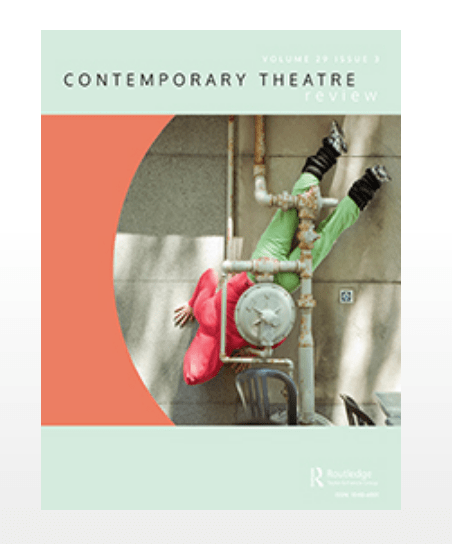
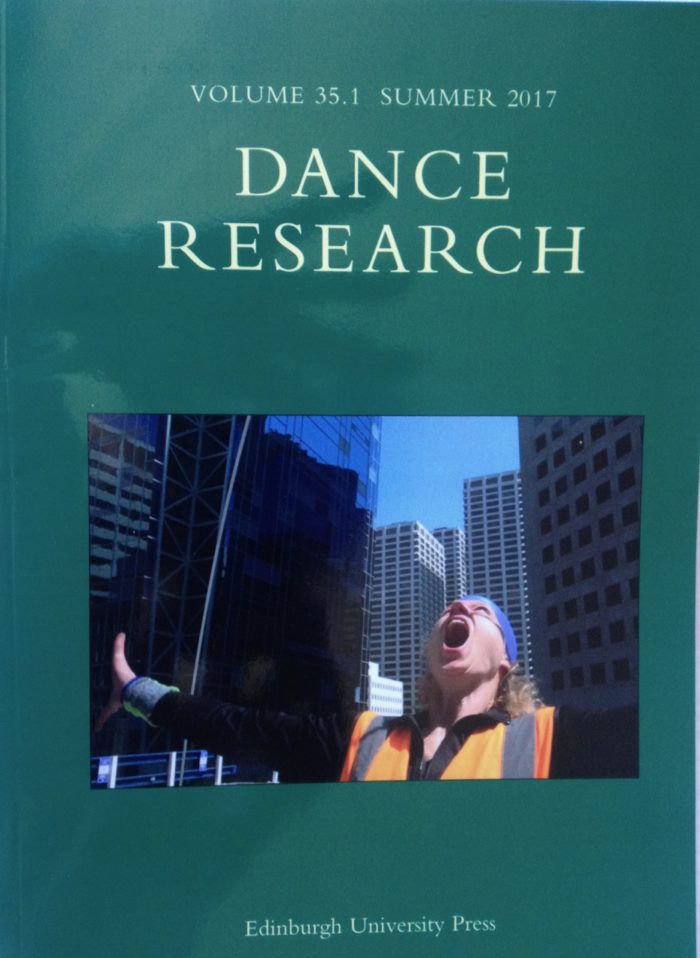
Articles and Book Chapters
Site, Adapt, Perform: A Practice-as-Research Confrontation with Climate Change
Dance Research (Edinburgh University Press)
Volume 35.1, Summer 2017
Abstract
In recent years, arts festivals around the globe have become enamoured of touring, site-based performance. Such serialised site work is growing in popularity due to its accessibility, its spectacular characteristics, and its adaptive qualities. Employing practice-as-research methodologies to dissect the basis of such site-adaptive performances, the author highlights her discovery of the crumbling foundation of the adaptation discourse by way of her creative process for the performance work Room. Combining findings from the phenomenological explorations of her dancing body as well as from cultural analyses of the climate change debate by Dipesh Chakrabarty (2009), Claire Colebrook (2011, 2012), and Bruno Latour (2014), the author argues that only by fundamentally shifting the direction of the adaptation discourse – on scales from global to the personal – will we be able to build a site-adaptive performance strategy that resists the neoliberal drive towards ecological and economic precarity.
Articles and Book Chapters
Site and Re-Site: Early Efforts to Serialize Site Dance
Dance Research Journal
Abstract
In this article, I investigate the historical precedents of site-adaptive dance. After walking through the mobility discourse as applied to site-specific art by such scholars as Miwon Kwon, Fiona Wilkie and Victoria Hunter, I examine the mobile site works of North American choreographers Ann Carlson, PearsonWidrig DanceTheater, Eiko & Koma, and Stephan Koplowitz as exemplary of early attempts to take site dance on tour. Finally, I argue for the value of employing the lens of adaptation to analyze such works, both for the field of site performance and for the larger cross-disciplinary dialogues that could be activated.
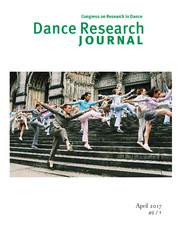
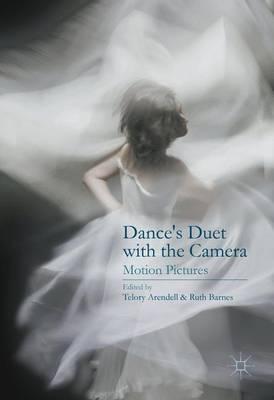
Articles and Book Chapters
Location, Location, Location: Dance Film and Site-Specific Dance
Dance’s Duet with the Camera: Motion Pictures (Palgrave Macmillan)
Edited by Telory Arendell and Ruth Barnes
Abstract
Dance film and site-specific dance are two dance genres that are seemingly at odds. Dance film aims to communicate through a two-dimensional display; site-specific dance pursues tangible, real world connections to three-dimensional sites. Dance film brings audiences up close to both dancing bodies and places without the audience having to move a muscle; site-specific dance expects audiences to physically integrate with the details and totality of a place. Yet, these two ‘divergent’ genres have much more in common than may at first be apparent. Through an examination of the history of these genres as well as through a look at each genre’s techniques, processes, and current productions, I argue that one of the features that helped define both forms– a turning away from the proscenium arch and a turning towards alternative contexts – has continued to connect them. In this chapter, I investigate how dance film and site-specific dance, in embracing both alternative contexts and altered perspectives on the body, have helped to ‘democratize’ Western dance practice on a societal level. Building on a previous argument pointing to the significance of place in the dance film genre, I demonstrate how dance films, similar to site-specific dances, have dehierarchized the relationship between trained and untrained movers, as well as between performers and place, effectively transforming our notions of how movement can connect populations to one another and to the environments in which they reside.
Articles and Book Chapters
Site-Specific Dance in a Corporate Landscape: Space, Place, and Non-Place
Moving Sites: Investigating Site-Specific Dance Performance (Routledge)
Edited by Victoria Hunter
Abstract
A revised version of Kloetzel’s New Theatre Quarterly article from 2010 is now available in Victoria Hunter’s new book Moving Sites: Investigating Site-Specific Dance Performance.
Site-specific performance relies on the terms space and place as markers for discussing a performance’s engagement with a site. However, practitioners and researchers are often disgruntled by the limitations such terms impose upon site-specific performance – as was Melanie Kloetzel, in the creation of The Sanitastics, a site-specific dance film created in the Calgary Walkway System. In this article, Kloetzel examines how theorists have struggled with space and place in the last four decades and how bringing in the perspective of the body allows us to reassess our assumptions about these terms. As she analyzes her creative process, she discovers the restrictions as well as possibilities in space and place, but she also notes the need for Marc Augé’s idea of non-place to clarify her site-specific efforts in the homogenized, corporate landscape of the Walkway System.
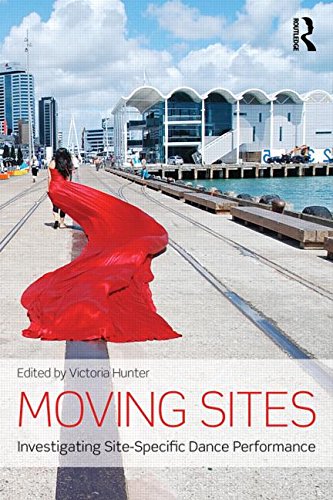
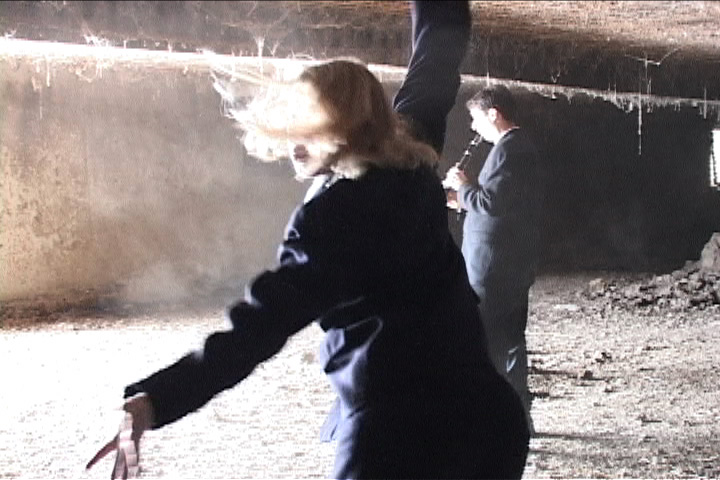
Articles and Book Chapters
Bodies in Place: Location as Collaborator in Dance Film
International Journal of Performance Arts and Digital Media (Routledge)
Online – July 2014, Print version – Spring 2015
Abstract
“Bodies in Place” examines the significance of the performer–place relationship in dances created for the camera. By looking at her own dance films as well as those from Maya Deren to Isabel Rocamora, Kloetzel uncovers the deep import that location has taken on in the dance film genre. Owing to the near absence of spoken text, the filming strategies used in the genre (including frequent use of close-up and long shots) and a keen interest in narrative, place has become not only an essential marker for comprehension of the films, but a partner alongside and in dialog with a responsive, phenomenal body. Employing theories from site-specific performance as well as from the growing scholarship around screendance, Kloetzel scrutinizes what occurs to the performer–place relationship during the filming, editing and viewing processes, in order to demonstrate the direct, kinesthetic impact that a de-hierarchized performer–place partnership can have on viewers across the screen divide.
DOI:10.1080/14794713.2014.927712
Articles and Book Chapters
Have Site, Will Travel – Container Architecture and Site-Specific Performance
Conversations Across the Field of Dance Studies, vol. XXXIII, 2013
Abstract
“Have Site, Will Travel” explores the cultural fascination with mobility and how it intersects with both architecture and performance. Using her site-adaptive work, Dwindling Dispute TKO, as a lens to examine this fascination, Kloetzel turns her eye to mobile architecture, in particular transformed shipping containers, to peer more closely at how site performers can use portable structures for creative inspiration. With a critical look at a particular event, the containR project situated as part of Calgary’s annual Fluid Festival, she observes that the works created for containR struggled in their ability to access the deeper meaning of portable architecture in our culture. Ultimately, Kloetzel wonders if it possible for performance to enter the larger discussions of international trade, material goods, and exchange. Or do these prefabricated, monotonous, and seemingly “non-specific” boxes inherently resist such a connection?
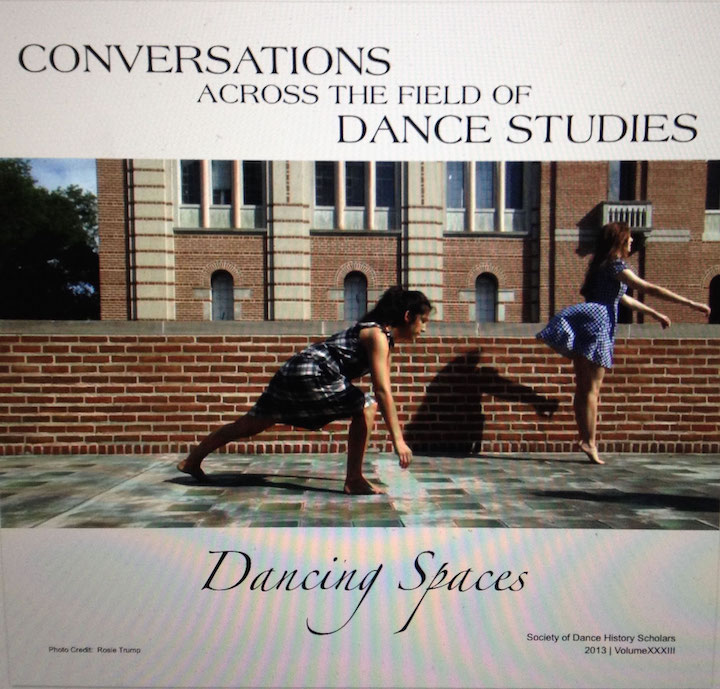
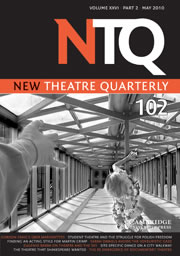
Articles and Book Chapters
Site-Specific Dance in a Corporate Landscape
New Theatre Quarterly, 26:2 (May 2010) – Cambridge University Press
Abstract
Site-specific performance relies on the terms space and place as markers for discussing a performance’s engagement with a site. However, practitioners and researchers are often disgruntled by the limitations such terms impose upon site-specific performance – as was Melanie Kloetzel, in the creation of The Sanitastics, a site-specific dance film created in the Calgary Walkway System. In this article, Kloetzel examines how theorists have struggled with space and place in the last four decades and how bringing in the perspective of the body allows us to reassess our assumptions about these terms. As she analyzes her creative process, she discovers the restrictions as well as possibilities in space and place, but she also notes the need for Marc Augé’s idea of non-place to clarify her site-specific efforts in the homogenized, corporate landscape of the Walkway System.
DOI: 10.1017/S0266464X10000278
Articles and Book Chapters
A Trek Through Pseudo-Utopia: Irvine, CA and beyond
EnterText, vol. 5 no. 2, December 2005 – Brunel University London
A creative, physical, and theoretical exploration of urban planning and geography in southern California using the theories of Michel Foucault, Edward Soja, and David Harvey.
